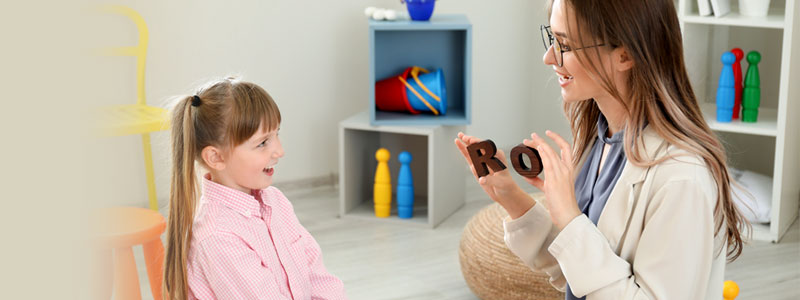Communicating in Longer Sentences: Advantages, Considerations and Tips to Improve Your Child’s Communication Skills
Communication is a large part of a child’s development and is vital in enabling the child to express their wants and needs clearly and effectively.
Being able to communicate effectively is an essential life skill. Whether at home, school or in their communities, having good communication skills can help the child reduce frustrations in communication, learn more effectively at school, and build rapport successfully with their family members, peers and other adults, among other benefits — even when the child enters adolescence and adulthood.
However, some children, including those with developmental disorders or delays, may encounter difficulty in acquiring and using language to communicate their wants and needs. They may only be able to use 2 to 3 words to express themselves. This can lead to frustration when a need or want is not understood or met or when there are unnecessary repetitions, among other issues.

WHY is There a Need to Communicate in Longer Sentences?
- Longer sentences contain more information, allowing the child to specify their wants and needs more coherently and clearly. For example, they can say, “I want the small yellow Lego”, as opposed to just “Lego” or “I want Lego”. This will increase the likelihood of the child getting the small yellow Lego brick they wanted.
- Longer sentences also enable the children to gain more meaningful information, increasing their sense of curiosity and knowledge.
- Being able to convey their requests in longer sentences and greater specificity can enable others, even strangers, to better understand and meet the child’s needs and wants, reduce unnecessary frustrations and facilitate quality conversations.
- Longer sentences also improve the child’s ability to sustain attention throughout the conversation. This can help build stronger bonds and a better understanding of the child.
Ultimately, being adept at forming longer sentences can empower the child to initiate and hold quality conversations and form more meaningful relationships.
As parents, you are the best role model and teacher to guide and support your child in the building and strengthening of their ability to communicate or converse using longer sentences, both at home and in social interactions. Before we share with you expert tips on how you can help your child form longer sentences, it is advisable to first bear in mind some important considerations.
WHAT Are the Considerations?
- The sentence needs to be at your child’s level of understanding. Having unnecessary words or words that your child does not understand can potentially increase sentence difficulty, reduce the meaningfulness and discourage your child from picking up useful words.
- Making learning fun can boost your child’s motivation to speak. Do remember that you are encouraging your child to talk using longer sentences, not demanding it. Demanding and expecting your child to only say what you say can dampen their willingness to communicate. Instead, you can rearticulate your child’s sentences.
- Take the effort to rearticulate your child’s words in longer sentences and model for them. For example, a child says, “Flying the aeroplane!” Parents can repeat in their own words and without making any demands on the child, “I am flying the aeroplane into the sky, up and up it goes!”
- Age appropriateness. Overly complex or convoluted sentences can make it difficult for your child to understand or pick up.
- Consistency is key. Avoid giving in to requests made in short sentences or disjointed words. Giving in easily and inconsistently will only serve to reinforce speaking in short sentences and your child will not be motivated to use longer sentences.
- As adults, our speech ability and speed differ from our children’s. Speak slowly and clearly to enhance understanding and encourage quality communication.
- Give your child time to think through and request again using a longer sentence. Encouraging them to think of the appropriate words to use is more important than spoon-feeding them the sentences. For example, if the child requests a plate, the parent can hold up plates of varying sizes and ask the child which size they want. This will encourage the child to think and be more specific in their request — to ask for either the big or small plate.
HOW Can You Help Your Child Communicate in Longer Sentences?
Our ABA Therapists share four insightful tips on how you can encourage your child to string together words to form longer sentences.

Tip #1: Exposure
Exposure can give your child the knowledge of what to say as well as the ways they can expand their sentences. Your child can gain exposure in many ways, such as through play-based exposure, watching age-appropriate shows and cartoons, reading books, etc. These are feasible methods in which children can pick up languages in a fun and meaningful way.
Tip #2: Modelling
Modelling, or copying the behaviour of someone else, is a powerful tool that can help individuals pick up information easily or learn the right way to do or say certain things. In the context of longer sentences, modelling can encourage your child to imitate you and practise requesting with more descriptive words. Parents can add descriptive elements, such as the person, attribute, actions and even quantity. For example, you can say, “Can you give (action) me (person) 3 (quantity) yellow (attribute) balls?”, instead of “Give ball” or “I want ball”.
Tip #3: Practice and more practices
Provide plenty of opportunities – and maximise those that may arise in everyday activities — to help your child practise requesting and commenting in longer sentences. Such opportunities also allow you to provide real-time feedback and guidance to boost your child’s learning and engagement.
Tip #4: Playdates
A play date is getting children to engage with their peers through play. Playdates can help children develop and hone essential skills, such as social, communication and problem-solving skills, as well as increase learning opportunities while having fun.
Matching your child to a suitable peer can encourage commenting during playtime, and create plenty of opportunities for exposure and peer modelling.
Can Applied Behaviour Analysis (ABA) Therapy Help Improve Communication Skills?
Children who have developmental delays, developmental disorders or behavioural issues and are experiencing language and communication difficulties may benefit from professional help. One of the most effective intervention approaches is Applied Behaviour Analysis (ABA).
This research-backed intensive therapy, typically held one-on-one, has over 50 years of efficacy in imparting learning strategies, including language and communication skills, to children with developmental delays, developmental disorders and behavioural issues. ABA uses the principles of learning and motivation to shape positive behaviours, reduce negative ones, teach new and replacement skills and help children adapt learning across settings, situations and people.
In the development of speech, language and communication, ABA practitioners may work with Speech-Language Therapists to provide the child with more comprehensive strategies and interventions through integrating speech-language techniques in the child’s ABA therapy.

What You Can Expect During ABA Therapy
Seeking help early is highly recommended. Children are known to be able to learn faster and better, making more significant and lasting improvements in their development during early intervention.
At the start of the session, an ABA therapist will begin by pairing with the child, to better understand and build a rapport with the child. The therapist will use multiple fun and creative games, activities and exercises to engage the child. The child’s communication skills, both verbal and non-verbal (e.g. facial expressions) cues, and desirable social interaction skills can then be developed and honed through:
- Following instructions
- Complying with requests
- Responding to questions
- Naming and identifying items, events, etc.
- Reading
- Matching emotions with the right facial expression
- Strengthening of the mouth, jaw, and neck muscles
- And others
At Dynamics Behaviour Analysis, our sessions are typically held 1:1 for more intensive and personalised therapy. We will first assess the child’s abilities and needs as well as gather important information, through a formal assessment and parents interview, about the child’s medical history and more at our initial consultation. In the same session, we will provide feedback to the child’s parents and make feasible recommendations.
Upon enrolment in the ABA Programme, the child will undergo a more in-depth assessment, the Initial Probe Programme (IPP), to better understand the child’s needs and customise their programme, an Individualised Educational Programme (IEP) with developmental targets and goals, that best suit the child. We will also conduct periodic reviews to track the child’s progress and measure the progress against the defined goals. Our ABA Supervisor will update the child’s parents accordingly and may adjust the programme goals for better results, in consultation with the child’s parents. The IEP is typically six months long, although the duration may vary among children. With the conclusion of the IEP, we will provide a Progress Report and discuss together with the parents the next best course of action for the child.
To provide you with greater convenience, our sessions can be conducted at our centre, your home or a combination of both (hybrid).
We also advocate parental and caregiver involvement in the child’s learning journey. Parents or caregivers are the best people to ensure continuity and adaptation of the child’s learning outside of the sessions. Where appropriate, we provide parents training, informative resources and open communication throughout.
For any ABA-related exercises you wish to implement at home, you can do so in consultation with our dedicated ABA Therapists. We are here to support you and your child with the best.
About Dynamics Behaviour Analysis
Our highly qualified ABA Therapists collectively have extensive experience working with children and adults from different countries and have been trained and worked with some of the best in ABA. Our team is led by a Board Certified Behavior Analyst (BCBA).
Adept at using best practices and research-based intervention strategies and procedures, our dynamic team is committed to providing personalised and data-driven programmes and care, and actively partnering with parents and caregivers to enable every child to reach their full potential, achieve goals and enjoy an empowering learning experience.
We also ensure seamless and hassle-free integrated care and support by working closely with experienced healthcare professionals of Dynamics Therapy Group’ in-house multidisciplinary team, such as Occupational Therapists, Speech Therapists, Physiotherapists, Counsellors, Education Therapists, and more.


